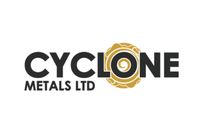Australia's Mining Dilemma: Can ESG Goals and Competitive Production Coexist?
A new Fastmarkets report shows that ESG-focused Australian miners are facing competition from cheaper producers abroad.

With investors placing increasing value on environmental, social and governance (ESG) issues, mining companies are having to choose between maintaining competitive production and promoting ESG principles.
That's the topic explored in an August 8 report from Callum Perry, Solomon Cefai, Alice Li and Laura Roberts of Fastmarkets. In it, they outline the conundrum facing Australia's mining industry and the impact it's having.
The report begins with a refresher on Australia's ESG frameworks at both the state and federal level. While these initiatives underscore a commitment to responsible mining practices, they are also tough to navigate.
According to Fastmarkets, Australia's ESG backdrop is complex and poses challenges for companies working in the mining sector. The firm adds that the nation's commodity export earnings are projected to decline to AU$352 billion in the 2024/2025 period, which is AU$48 billion short of AU$400 billion in the previous timeframe.
“Australia’s mining dilemma lies in how it can reconcile its commitment to ESG with the need to profit from its vast, rich resources, especially because new players — that hold promises of cheaper prices — threaten to overtake,” the firm says.
Iron ore miners must boost both output and ESG efforts
Looking specifically at Australia's major iron ore miners, Fastmarkets states that their main challenge is reducing emissions while maintaining and increasing their production levels.
The report mentions Rio Tinto (ASX:RIO,NYSE:RIO,LSE:RIO), BHP (ASX:BHP,NYSE:BHP,LSE:BHP) and Fortescue (ASX:FMG,OTCQX:FSUMF), which have committed to net-zero greenhouse gas emissions by 2050.
Rio Tinto is aiming to reduce its emissions by 50 percent by 2030, and BHP has set a target of a 30 percent reduction by the same year. Fortescue has an even more ambitious target of 90 percent.
Fastmarkets states that these goals require substantial investments in renewable energy, electric mining vehicles and collaborations with steelmakers to develop new technologies. However, the firm adds that these efforts from the major miners will not guarantee decarbonisation, as there is no one-size-fits-all solution.
Rio Tinto's ESG efforts include decarbonising its minerals processing and Australian aluminium smelting operations, along with shifting its fleet away from diesel. The company plans to approach its zero-emissions target by 2050 slowly but surely, aiming for 15 percent and 50 percent reductions by 2025 and 2030, respectively.
On its website, BHP has a page dedicated to operational GHG emission reductions, emphasising that most of its operated assets are grid-connected in geographic areas that have access to renewable electricity through a network. Diesel displacement is also mentioned, with the company saying that studies “indicate that electrification through battery electric vehicles is the most technically feasible and commercially attractive solution for material movement.”
Fortescue, the third largest iron ore miner, has set its net-zero emissions target to 2040, earlier than Rio Tinto and BHP. In a climate change report, the company lists decarbonisation efforts such as: a zero-emissions Infinity Train and haul trucks in partnership with Liebherr; an ammonia-powered shipping vessel; a partnership with Airbus (EPA:AIR) and Universal Hydrogen to decarbonise aviation; and a green energy manufacturing centre.
According to Fastmarkets, all three companies have new iron ore projects and expansions in the works; however, costs associated with their ESG plans don't appear to have been accounted for.
"An Australian-based miner source told Fastmarkets that the cost of ESG plans would increase the overall capital intensity of projects, yet it appeared it was not currently calculated or directly reflected in the iron ore unit cash cost or pricing for major miners," the firm states in its report.
ESG requirements hindering Australian alumina, lithium markets
Fastmarkets also looks at how the shift toward ESG is affecting Australia's alumina and lithium markets.
In terms of alumina, the firm notes that while countries like Indonesia, Vietnam and India have expansion projects in the works, Australian operations have experienced issues due to ESG requirements and other factors.
For example, major producer Alcoa (NYSE:AA) is having difficulties getting approval to develop new bauxite reserves, while ESG-related requirements are hindering South32's (ASX:S32,OTC Pink:SHTLF) Worsley Alumina expansion.
At the same time, the lithium market is experiencing diversification as other countries increase production to reduce reliance on Australian spodumene. Australia is currently the top producer of the battery metal, and while some still prefer Australian spodumene due to its high ESG standards, the lithium sector is seeing increased investment in regions like Africa, driven primarily by Chinese firms seeking cheaper alternatives.
The report notes that 2023 and 2024 “have been dominated by sharp declines in lithium prices globally, amid softer demand and improved supply globally, pressuring the margins of some producers within the country.”
“In this current market, it’s hard to know where the floor in prices for spodumene will be because of the wide cost basis globally,” a lithium trader told Fastmarkets. “However, it’s not hard to see that many of the Australian producers will struggle most in a low-price environment."
Don’t forget to follow us @INN_Australia for real-time news updates!
Securities Disclosure: I, Gabrielle de la Cruz, hold no direct investment interest in any company mentioned in this article.
- Earth Day: Top 5 Miners Forging Sustainable Paths Amid Growing ESG Scrutiny ›
- 5 Things to Know About ESG Investing Today ›

